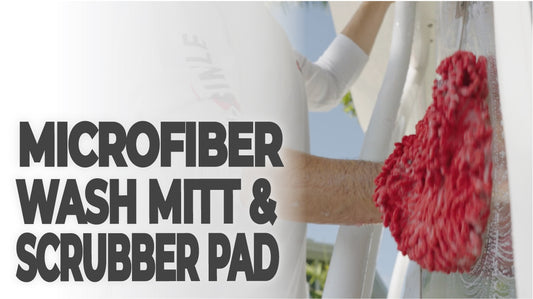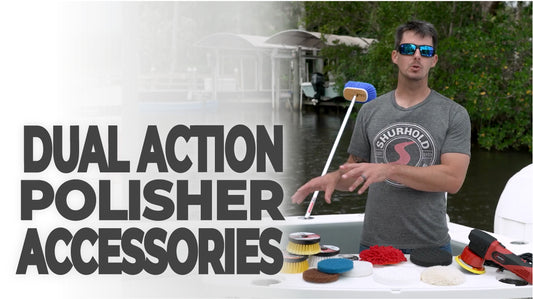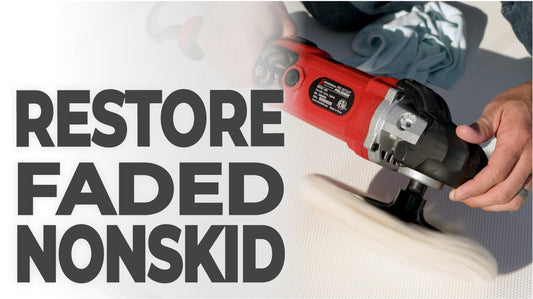Take one look at your local boating goods store and you'll probably be overwhelmed with the variety of cleaning products available to you, especially when it comes to waxes and sealants. What are the differences between them and what works the best? Today, Captain Sam McGinley tests some of the most common choices you'll see and compares them to Shurhold's Pro Polish, our protective product.
First off, when we refer to wax for our boat or car we are really discussing putting a coat of protection on the surface. This protection is used to help sheet water off and delay the natural oxidation of the surface caused by the environment and UV rays of the sun. Years ago all protectants were WAX based and that is why we refer to the process as waxing. Today there are many forms of surface protection and many do not have any true wax in them at all.
Overall, the goal of these products is to add a sacrificial barrier to the gelcoat and protect the surface from environmental fallout, UV damage, water spots, and other harmful effects. We wanted to know which product left the best barrier coat, which is easily seen when water is allowed to bead on the surface. Let's dive into the tests and see what was learned.
Wash & Wax – This category of products claims to wash and wax the surface at the same time. In our opinion, this is just marketing as no real effective protection is left behind. You are much better off finding a Wash Soap that cleans well, protect the environment, and does not prematurely degrade your protective coating.
Cleaner Wax – This category of protectants includes a mild abrasive in with the protectant. It provides some very light stain removal at the same time you are waxing. Many of these products do work decently. Unfortunately, the compounding action will abrade the surface and leave small scratches if not finished correctly. There is a finite amount of gelcoat or clear coat on your surface, so we always recommend only to use abrasive product when and where they are needed. Additionally, these products contain Talc Powder, which act as a filler and make the clean-up process very messy.
Paste Wax – These are the traditional forms of wax protection. In the past, these products required some elbow grease and hours of buffing to apply. While they have gotten better, they are still subject to the long cure times and very specific windows in which they can be worked with. Buffing out these waxes results in the use of multiple towels to remove and plenty of hard work.
Polymer Wax – This category of products is where Pro Polish fits in. Most are fully synthetic and actually have no natural wax in the formula. These chemicals have the consistency of cream and are very easy to work with allowing you to protect your finish in about half the time. Pro Polish has performance on par with any other high quality wax without the need for talc powder or other fillers. It chemically bonds with the surface, lasts longer and includes true UV inhibitors.
The next time you find yourself in a sea of waxes, you will know to look for a good quality Polymer Protectant with UV additives, or just ask for a bottle of Shurhold’s Pro Polish.
Until next time keep your car, boat, or RV, Clean-N-Simple!



